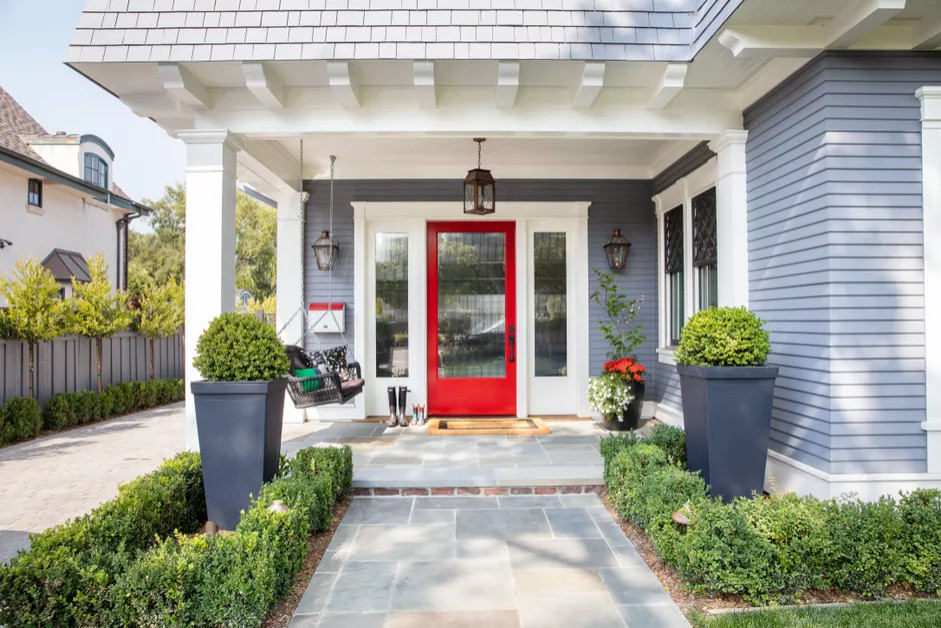Leading Landscape Designer for Personalized Outdoor Living Areas
Leading Landscape Designer for Personalized Outdoor Living Areas
Blog Article
The Duty of Yard Layout in Encouraging Sustainability and Biodiversity
Yard style is significantly acknowledged for its possible to promote sustainability and improve biodiversity within city and country landscapes. By prioritizing indigenous plant species and utilizing water conservation techniques, designers can develop atmospheres that not just grow yet additionally need marginal chemical treatment.
Importance of Indigenous Plants
Emphasizing making use of native plants in yard design is critical for advertising environmental equilibrium and sustainability. Native plants are those that normally occur in a specific region and have adapted to the neighborhood environment, soil, and wild animals. Their unification right into gardens supports regional environments by offering habitats and food sources for indigenous pollinators, birds, and various other wild animals.
Additionally, indigenous plants are normally much more resistant to neighborhood insects and illness, reducing the need for chemical pesticides and fertilizers. This resistance not only decreases environmental influence but also lowers maintenance costs for gardeners. Native plants commonly call for less water than non-native varieties, lining up with lasting gardening practices and minimizing the strain on local water resources.
Water Conservation Techniques
Integrating native plants not just improves biodiversity but additionally plays a considerable role in water preservation within garden layouts. Indigenous types are adjusted to regional environment conditions, requiring less water than non-native equivalents. Landscape Designer. This particular reduces the demand for watering, preserving both water sources and power
Additionally, implementing rainfall yards can catch and filter stormwater overflow, advertising groundwater recharge while lessening erosion. These gardens utilize native plants that grow in wet conditions, successfully taking care of excess water while producing diverse habitats.

Another efficient technique is using permeable paving materials in pathways and patios, permitting rainwater to infiltrate the ground as opposed to running. This promotes dampness retention and reduces the need for watering.
Last but not least, installing a rain harvesting system can significantly add to water conservation efforts. Accumulating and saving rain for yard use urges sustainable methods and decreases reliance on local water sources (landscape designer near Larson South Carolina). By integrating these strategies, garden styles can properly advertise water preservation while sustaining environmental health
Reducing Chemical Use
While several gardeners seek vibrant and healthy plants, minimizing chemical use is crucial for cultivating a sustainable ecological community. The reliance on artificial fertilizers and chemicals can lead to soil deterioration, water contamination, and a decrease in advantageous insect populaces. By adopting natural gardening practices, gardeners can enhance the wellness of their landscapes while advertising biodiversity.
One effective strategy is to make use of compost and natural changes, which improve the dirt normally and improve its structure. landscape designer near Johns Island South Carolina. These techniques not just increase plant health and wellness however additionally reduce the demand for chemical plant foods - Landscape Designer. Carrying out integrated pest management (IPM) strategies better decreases chemical inputs by urging natural predators, such as ladybugs and parasitical wasps, to regulate pest populaces
In addition, picking indigenous plant types can significantly reduce the demand for chemical interventions, as these plants are better adjusted to local problems and are a lot more resistant versus parasites and illness. By focusing on lasting methods, gardeners can develop flourishing environments that sustain both plant health and wellness and ecosystem integrity, inevitably leading to yards that are not just gorgeous yet likewise environmentally responsible. Decreasing chemical use is an essential action in cultivating yards that honor and boost the environment.
Creating Wildlife Habitats
Creating lively wild animals habitats within yards not just improves biodiversity but likewise enhances sustainable horticulture techniques intended at decreasing chemical use. By incorporating indigenous plants, garden enthusiasts can provide necessary sources such as food and sanctuary for different species, including birds, insects, and tiny animals. Native plants are well-adapted to neighborhood problems, needing less water and fewer chemical inputs, hence lining up with sustainability goals.

Maintaining a naturalistic approach, which might include leaving some locations wild or undisturbed, permits the all-natural processes of ecosystems to thrive. This practice urges the visibility of valuable pests his comment is here and pollinators, which play a crucial duty in the health of both gardens and surrounding environments. Generally, developing wild animals environments is an essential element of lasting garden design, promoting ecological balance and durability while enhancing the elegance and performance of outside rooms.
Area Interaction in Horticulture
Community involvement in gardening cultivates a feeling of belonging and collective duty, changing private gardening initiatives right into common campaigns that benefit the entire area. By entailing community participants in gardening projects, we can cultivate not only plants however additionally relationships and social media networks. Regional gardens act as crucial rooms for education, where people of any ages can find out about lasting techniques, biodiversity, and ecological stewardship.
Joint horticulture efforts, such as community yards, promote the exchange of knowledge and resources, guaranteeing that all individuals can contribute and profit. This inclusivity improves area resilience, as members interact to get rid of difficulties such as food instability and ecological destruction. Furthermore, neighborhood gardens can act as platforms for social expression, permitting people to share their heritage through diverse growing and gardening strategies.
Moreover, involving the neighborhood in gardening efforts can result in boosted recognition of neighborhood ecological communities and the importance of biodiversity. By functioning collectively to layout and preserve these areas, residents promote a shared commitment to sustainability, producing a long-term effect on both the setting and area communication. Eventually, area interaction in horticulture is a powerful device for advertising ecological stewardship and boosting the lifestyle within areas.
Conclusion
By highlighting the use of native plants, applying water preservation techniques, and decreasing chemical inputs, yards can effectively sustain local ecosystems. Collectively, these techniques not only improve the beauty of rooms however also advertise ecological equilibrium, making yard design a vital aspect in the pursuit of a lasting future.
Report this page